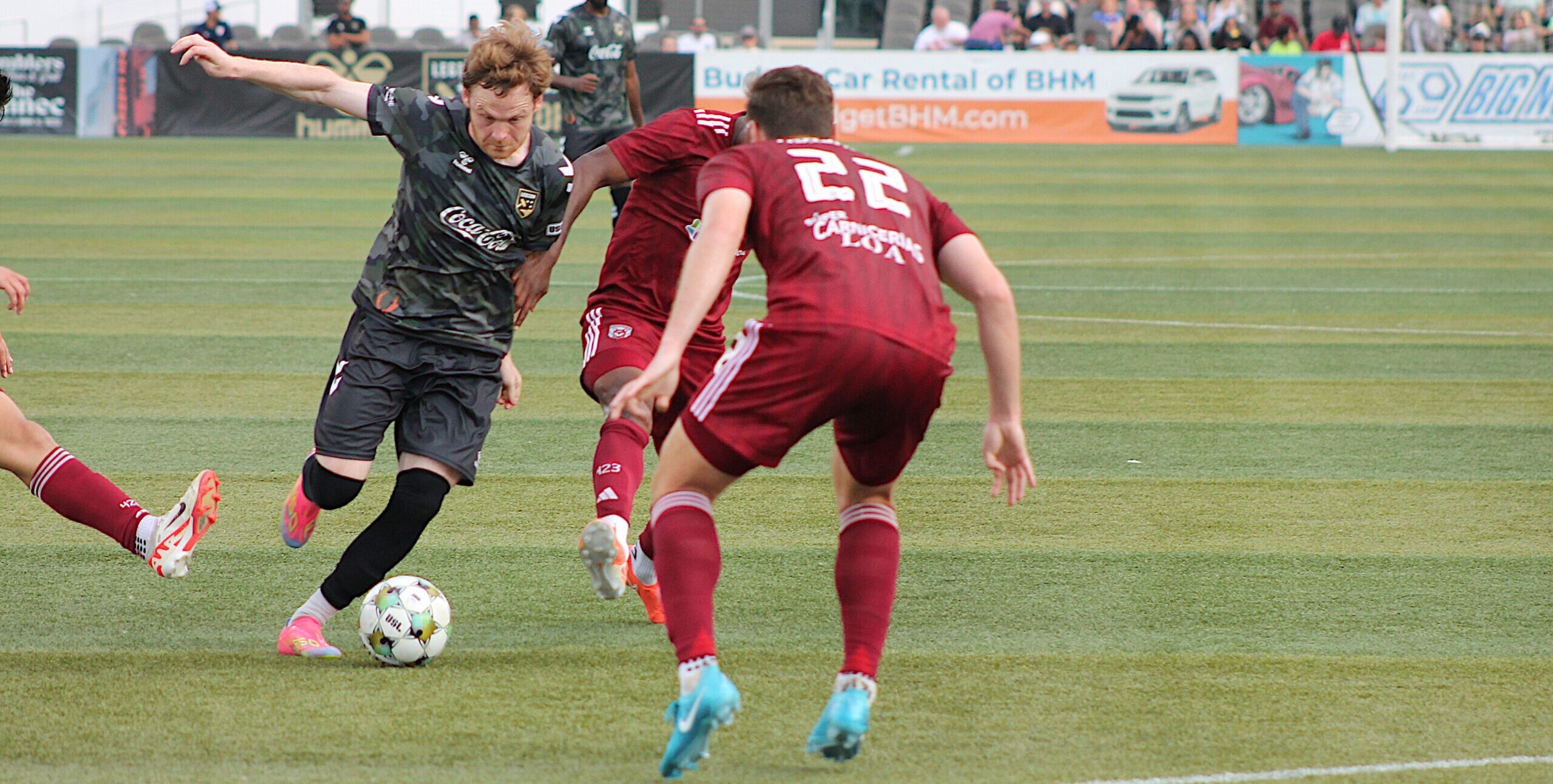With a brand new head coach coming in this week you may wonder: why bother with an analysis of the tactical approach in the last game? Well, two reasons. First, it takes time for a coach to install his system. Second, I have the sneaking suspicion it won’t be all that different from what we saw against the Red Wolves, at least not until the roster adjusts a bit (which is almost certain to happen over time).
That being said, we will take a slightly different approach to this game than what we typically have done in the past. To start, let’s take a look at the following graphic:

This is a tad messy, I admit. What it does is take the average positions of the starting XI and overlay them over the team’s heatmap for the game. However, it does tell us some interesting things about how the team played.
The formation was ostensibly a 4-1-4-1. As you can see, it seems very much like a 4-3-3. The fact is, the two formations are largely interchangeable. The 4-1-4-1 is generally considered more defensively oriented than the 4-3-3 since it only has one dedicated striker. I’m not so sure that is truly the case given that a 3-man midfield can significantly strengthen the defense. It also depends on how you choose to deploy the two wingers.
The 4-1-4-1 is also considered more flexible. That in turn is dependent on how you use the two central midfielders. In this case I would say they had alternating defensive and attacking responsibilities as the situation demanded.
The Legion’s opponent is known for playing a tough, physical game. They ended up with three yellows and a red, so that tracks. How the Three Sparks opted to deal with this was to employ a low-to-mid block, evidenced by the large red blob in the Legion’s own half and the proximity of Enzo Martinez (#19) and Tyler Pasher (#15) to that defensive structure. But these two are also well-known attacking threats, Tyler in particular. Moreover, his positioning on the interior midfield rather than on the wing may have thrown the Red Wolves a bit, as he had not historically been used that way, certainly not here in Birmingham. Would he go route 1 or would he go wide? They couldn’t know. It was a crafty decision.
Because Enzo and Tyler were able to move forward, this meant that the front 3 were able to do what the Legion almost never did under Tommy Soehn: stretch the field to its maximum width. As you can see above, with the arrows making it even more obvious, Danny Trejo (#7) and Sebastian Tregarthen (#21) most definitely did that. That allowed Ronaldo Damus to roam free right in front of goal.
Now let’s change the picture a bit:

Those are all the shots the Legion attempted. 16 of them in all. And of those only 2 were from outside the 18. Unheard of for this team. Moreover, those two were from Tyler and Kobe Hernandez-Foster (#8), not the front line. In all, 6 shots were on target and another 3 blocked, likely also on target. In comparison, the Red Wolves managed just 7 and only 1 on target, and that was very late (and annoyingly successful) when the game was no longer in doubt.
I haven’t addressed the substitutions here as in previous posts in this series, largely because the replacements were like-for-like, with one major exception. When Tiago Suarez came on for Phanuel Kavita at the half, Tiago took over at right back and Jake Rufe (#13) moved to center back, which is why he looks much narrower than Moses Mensah (#33) at left back. That was a bit perplexing as Tiago also plays at center back and is adaptable in the same way as Jake.
It should of course be borne in mind that the Three Sparks played about 30 minutes with a man advantage. That pads the stats, of course, but the good guys were already a goal up at that point and had been constantly threatening without much of a response. In fact, the Legion only took three shots after Michael Knapp was ejected from the game. Two of those scored, which, considering that a team will go highly defensive when down a man, is impressive.
I’ll finish with this: the 4-1-4-1 is not Mark Briggs’ preferred style, at least not in the way his Sacramento Republic teams played. He did occasionally use a 4-man back line but his preference was for 3 or 5 at the back. That will not be so easily achieved here in the Magic City (at least, not until all our center backs are fully fit). How he djujsts to the roster he now has will be interesting.






